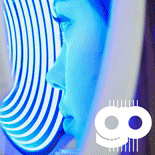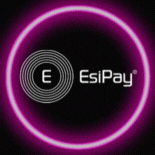How can you make an eye exam more comfortable for a child with autism?
By Jake Hopkins is an optometrist turned stay-at-home dad.
One of Opchat News Clinical Briefing Papers (November 2023)
The article has been syndicated to us for publication.
Going for an eye exam can be a strange and intimidating process for any child.
With lots of unfamiliar instruments and technology, it can be quite overwhelming – and even more so for autistic children. As an optician, you’ll naturally want to ensure that every patient’s eye exam is as comfortable as possible, but to minimise the discomfort for autistic children, you may need to take additional steps.
By creating a comfortable environment, you can make sure you get accurate results and hopefully reduce their anxieties for the future. In this article, we discuss some of our top tips to make an eye exam as comfortable as possible for an autistic child.
Explain everything clearly
Clear communication is beneficial in every eye exam, but it’s especially important when you’re examining a child with autism. They may not understand hidden social cues, jokes or non-literal phrases, so try to pay attention to the words that you’re using when describing the process.
It’s also important to avoid using technical terms, and instead use language that is simple and easy to understand. While you might already do this for young children, it’s absolutely crucial in order to make the exam more comfortable for autistic patients. It can also help to encourage them to ask questions, and to remain patient when you’re responding.
Don’t do anything without warning
Some children with autism may suffer from heightened sensitivity to certain sensory changes around them, such as touch, sound and light. As a result, it’s key to avoid catching your patient off guard while you perform the eye exam.
To do this, make sure to provide a clear explanation of what each piece of equipment does before you use it, and how the process will work. This way, they’ll have time to prepare themselves for the new sensation. For example, if you’ll be using a bright light, make sure to warn the child beforehand and or even give them the opportunity to try it themselves first.
Provide fidget toys
Autistic children may often benefit from keeping their hands busy during other tasks, particularly when they require them to sit still for long periods of time. By providing them with fidgets or other toys that they can play with during the exam, they might be more likely to stay focused and can better regulate their emotions.
If you don’t have any fidget toys, consider encouraging the patient’s parents to bring in their child’s favourite toys with them for their exam. Or, if your budget allows, it can be helpful to buy a small selection of toys to keep in the exam room for your patients to use.
Offer plenty of breaks
Even with all of these considerations, experiencing a new environment, a new person, new sensations, sights and smells can all be incredibly overwhelming. It’s crucial to be patient when examining a child with autism, and encourage them to take a break if they don’t feel ready for the next step of the process.
Author bio
Jake Hopkins is an optometrist turned stay-at-home dad. With many years of experience working in the optical industry, he now works to share all that he has learned. Combined with his experience raising his autistic son, he is an expert in putting patients at ease.
























